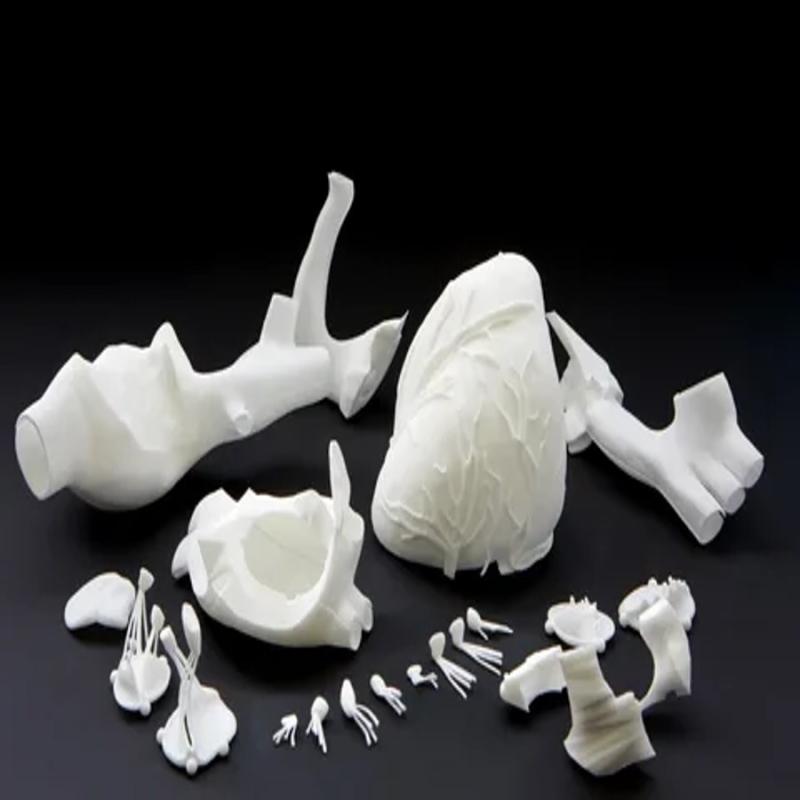History and Development
Bioceramics have an extensive history dating back several decades. One of the earliest examples of a implant was hydroxyapatite coating on hip prostheses developed in the late 1960s and early 1970s. However, it was through the 1980s and 1990s that significant advancements were made in both ceramic compositions and processing techniques. Aluminum oxide and zirconia gained popularity for applications requiring high strength and toughness like artificial joints and dental implants. During this period, calcium phosphate ceramics like hydroxyapatite and tricalcium phosphate emerged as promising options for bone regeneration due to their chemical similarity to the mineral component of natural bone. Continuous improvements in material purity, structural design, and surface modifications have enabled it to revolutionize various medical therapies.
Composition and Classification
Bioceramics can be broadly classified into three categories based on their composition and application: bioinert, bioactive, and bioresorbable ceramics. Bioinert ceramics like alumina and zirconia produce minimal tissue response and are used for long-term load-bearing implants like hip joints and dental roots that do not require tissue bonding. Bioactive ceramics like hydroxyapatite and glass ceramics actively bond to living tissues through formation of bone-like apatite layer when implanted in the body. They are preferred for applications involving hard and soft tissue integration. Bioresorbable ceramics made of tricalcium phosphate and calcium carbonate degrade and dissolve gradually while promoting new bone formation. They find application in fracture fixation devices and scaffolds for tissue engineering. The specific ceramic used depends on the physical and mechanical requirements as well as desired tissue response profile for a given medical therapy.
Tissue Engineering Applications
One of the major application areas of it is tissue engineering where they are widely employed as scaffold matrices. Ceramic scaffolds provide an osteoconductive extracellular environment mimicking natural bone. Hydroxyapatite and tricalcium phosphate scaffolds have shown considerable success in promoting osteogenesis and treating bone defects. Scaffolds seeded with cells can serve as tissue constructs for regeneration of various tissues like osteochondral grafts. Recent research efforts focus on developing composite scaffolds incorporating bioceramics with biodegradable polymers or natural polymers like collagen. Such hybrid scaffolds combining the advantages of different materials may foster even better tissue regeneration outcomes. They are also being explored for fabrication of synthetic bioactive constructs like cervical disks, artificial meniscus, and bone grafts.
Cardiovascular Applications
In addition to orthopedic applications, they are gaining traction in cardiovascular therapies. Calcium phosphate coatings on metallic stents enhance the biocompatibility profile and support endothelization of stents. Hydroxyapatite coatings are applied to small diameter vascular grafts to encourage tissue ingrowth and healing. Bioresorbable magnesium alloy stents with bioceramic surface treatment degrade gradually without long-term vessel occlusion. Researchers are evaluating coatings and composite formulations to engineer fully degradable stents eliminated issues of late stent thrombosis. The applications are extending towards development of heart valves and vascular patches employing biomimetic hydroxyapatite or functionalized glass ceramic materials. The excellent bioactivity and mechanical properties make it ideal for diverse cardiovascular regeneration approaches.
Dental and Craniofacial Applications
As a major part of the dental field, it play a vital role in restorative dentistry and implantology. Ceramics like alumina, zirconia and lithium disilicate are the preferred materials for dental crowns and bridges demanding high strength, fracture resistance and esthetics. Dental implants essentially rely on titanium implants coated with hydroxyapatite to bond firmly with surrounding alveolar bone. Introduction of zirconia implants expands the options. For maxillofacial reconstruction after trauma or tumor resection, bioceramic materials are developed ascustomized ceramic bones, cranial plates and scaffolds serving as temporary or permanent functional and cosmetic replacements.Composite osteoinductive scaffolds of hydroxyapatite and biodegradable polymers are specifically designed for craniofacial tissue regeneration applications.Thus, it remain at the forefront of dental and craniofacial therapies leveraging natural and synthetic ceramic options.
Challenges and Future Directions
While it showcase tremendous promise, challenges remain in improving long-term mechanical integrity, interfaces with living tissues, and regulatory approvals. As life expectancies rise, long-lasting ceramic joint replacements are required to withstand higher cyclic loading over decades. Reducing stress-shielding through customized biomimetic structural designs can enhance bone remodeling around implants. Developing infection-resistant coatings and controlled drug delivery via bioceramics may curb adverse tissue responses. Further functionalization with biomolecules, growth factors and genes could empower it for advanced regenerative therapies. Shifting towards patient-specific 3D printing of ceramic implants and personalized scaffolds opens new possibilities. With continued multidisciplinary collaborations, they are sure to transform medical therapies through innovative high-performance materials in the future.
For Deeper Insights, Find the Report in the Language that You want.
About Author:
Priya Pandey is a dynamic and passionate editor with over three years of expertise in content editing and proofreading. Holding a bachelor's degree in biotechnology, Priya has a knack for making the content engaging. Her diverse portfolio includes editing documents across different industries, including food and beverages, information and technology, healthcare, chemical and materials, etc. Priya's meticulous attention to detail and commitment to excellence make her an invaluable asset in the world of content creation and refinement. (LinkedIn- https://www.linkedin.com/in/priya-pandey-8417a8173/)
